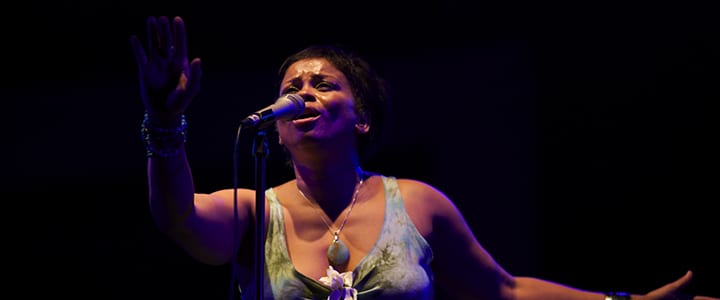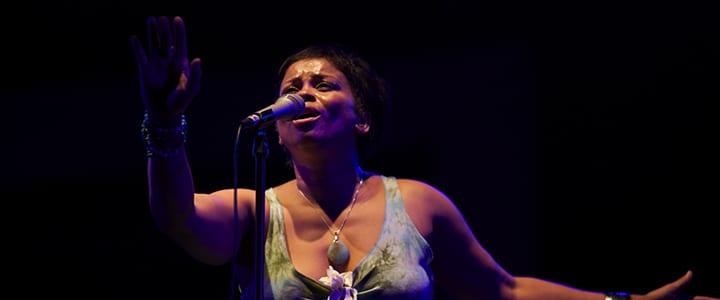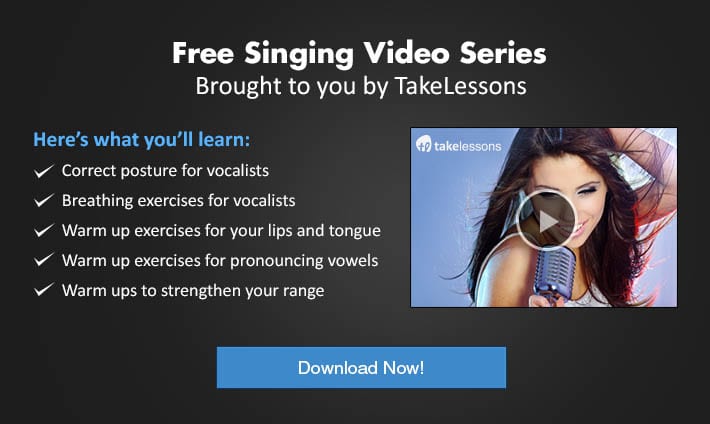 Is there such a thing as too much vibrato? Find out about the technique in this guest post by Brooklyn, NY singing teacher Liz T...
Is there such a thing as too much vibrato? Find out about the technique in this guest post by Brooklyn, NY singing teacher Liz T...
Have you ever listened to a professional opera or Broadway singer and noticed how strong their vibrato was? Or noticed how a lot of contemporary pop singers on the radio today do not use a lot of vibrato? In this article, I will explain how to find and control your vibrato to use appropriately when performing.
What is Vibrato?
To begin with, a simple definition of a vocal vibrato is a musical effect consisting of a regular, pulsating change of pitch. It is used to add expression, and can be characterized by the amount of pitch variation and the speed within the pitch that is varied. Listen to the clip below to hear Liza Minnelli’s interpretation of vibrato:
Opera and Broadway are two common musical styles in which vibrato is used. Singers such as Ethel Merman, Patti LuPone, Bernadette Peters, Barbra Streisand, Maria Callas, and Renée Fleming are all excellent singers to listen to for examples. Vibratos usually come into play at the very end of a powerful line or phrase, or at the end of the song to make it more dramatic. Vibrato is created by belting, and making the “word” of the note you are singing sound longer.
Some songs are written perfectly for the use of a vibrato. Take for example, the classic song “Don’t Rain on My Parade”, below:
This song has strong, powerful, melodic lines with held notes at the end of each phrase, especially near the end of the song (2:40 to the end). By adding a little vibrato, this is going to help you hold the note longer!
For singers who are just experimenting singing opera and Broadway, it’s important to begin by finding your vibrato. If you sing these songs completely without vibrato, the style is going to sound very different to the ear. These styles are are meant to sound dramatic and powerful, and without the use of vibrato, the song is going to be lacking in musicality.
Now, please note when singing in these genres, there is such a thing as singing with too much vibrato, as well as not enough. When you are singing in these genres, there is no need to add it all the time, really only at the end of phrases to create a dramatic effect. If you start out the song automatically punching out vibrato, it’s going to sound alarming to the listener! On the flip side, there is such a thing as not using enough vibrato.
Do Other Genres Use Vibrato?
In pop, rock, R&B, and country music, you need to have more of a balance of using your vibrato. Not to say you will never use it in these styles, but it’s not what makes these styles work. Riffs, improv, yodels, and a high mix, for example, are things that make these song work.
To get a feel for when vibrato does work in these genres, listen to the clips below of Beyonce and Christina Aguilera, two singers who use good vibrato technique.
For some singers vibrato may come naturally, while others will really need to work on developing and feeling comfortable using vibrato. My advice to singers is start exploring vibrato by listening to great singers who use vibrato and others who don’t, in the specific styles that I mentioned, and to practice belting to some songs that have a great potential for vibrato. Adding specific vibrato exercises, like this one demonstrated by Jacob O. Nygaard, will also help. Just remember to control and balance your vibrato, no matter what song you’re singing!
 Liz T. teaches singing and acting lessons in Brooklyn, NY. She is a graduate of the Berklee College of Music with a B.M. in Vocal performance and currently performs/teaches all styles of music including Musical Theater, Classical, Jazz, Rock, Pop, R&B, and Country. Learn more about Liz here!
Liz T. teaches singing and acting lessons in Brooklyn, NY. She is a graduate of the Berklee College of Music with a B.M. in Vocal performance and currently performs/teaches all styles of music including Musical Theater, Classical, Jazz, Rock, Pop, R&B, and Country. Learn more about Liz here!
Photo by Jimmy Baikovicius
Suzy S.

